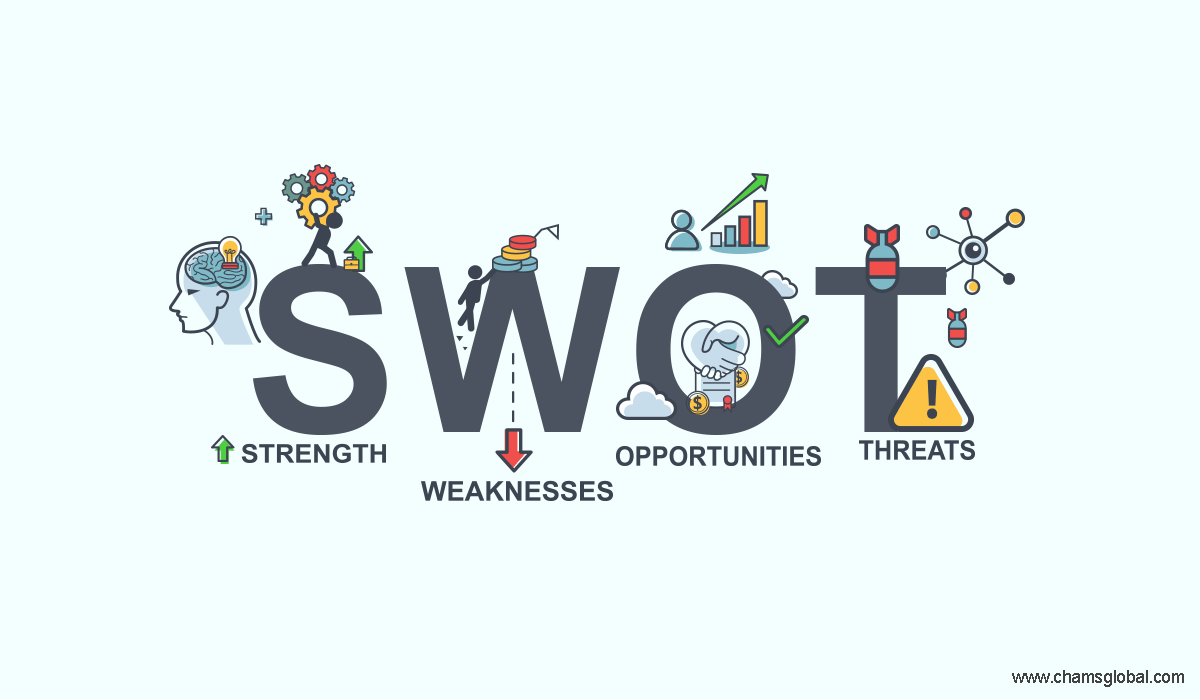
A SWOT analysis is a technique which is used to check the growth and success of a business or a project that we do. SWOT stands for, Strengths Weaknesses Opportunities Threats, after doing a SWOT analysis we are able to find our strength and weakness the areas to make changes and improve.SWOT analysis is a very powerful tool to succeed your business by studying the market and finding alternate solutions to beat your opponent by not having any competition.
In the Strength-phase we are analyzing the factors that are related to the factors that make us strong, unique and independent. Those are the factors which give us a place in our customers/clients. This part of the analysis will provide a lot of information about the areas that we have to stick on and which kind of strategy we have to continue or give more importance.
Example for STRENGTH:- Our complaint box for products will get a complaint just like 2/100 products while our competitor has more than 10/100 products will get complaints.
It is very important to identify our weakness as important as understanding our strengths. Itis when we have the knowledge about our weakness then only we can act for our growth. We have to find the inhouse weakness; primarily we need to know the strength of our team and their weaknesses and the weaker employees. Then we have to find our other weaknesses as our weaknesses in advertising branding promotion and all so over all in this phase we are actually finding the missing part of the issues and finding cure.
Example for Weaknesses:- After SWOT Analysis if it is shown that our company is not meeting the necessary screen time in social media or advertising platforms then it is a weakness
In the SWOT analysis framework, an opportunity refers to any external factor or situation that presents a favorable or advantageous circumstance for a business ororganization to pursue. Opportunities are typically identified through an analysis of the external environment, including trends, market conditions, and other factors that are beyond the control of the organization.
Example:-Opportunities might include a growing market for a particular product or service, changes in regulations or laws that favor the organization's goals, emerging technologies that could be leveraged to improve operations or create new products, or the entry of new competitors that could stimulate innovation and growth.In the SWOT analysis framework, a threat refers to any external factor or situation that could potentially negatively impact a business or organization's operations, performance, or viability. Threats are typically identified through an analysis of the external environment, including trends, market conditions, and other factors that are beyond the control of the organization.
Examples of threats:It is increased competition, changes in consumer preferences or behavior, economic downturns or recessions, regulatory changes that could harm the organization's operations or profitability, and natural disasters or other external events that could disrupt the organization's operations
conducting a SWOT analysis is a vital component of regular marketing audits, as highlighted in the blog "The Importance of Regular Marketing Audits for Long-Term Business Success." By thoroughly assessing internal strengths and weaknesses, as well as external opportunities and threats, businesses can gain valuable insights to inform their marketing strategies. This analysis allows them to capitalize on their strengths, address weaknesses, seize opportunities, and mitigate threats. By integrating SWOT analysis into marketing audits, organizations can lay a solid foundation for long-term success by adapting to market changes, optimizing marketing efforts, and staying ahead of the competition.
Latest posts
Useful Links